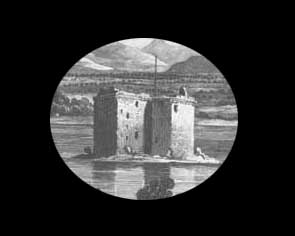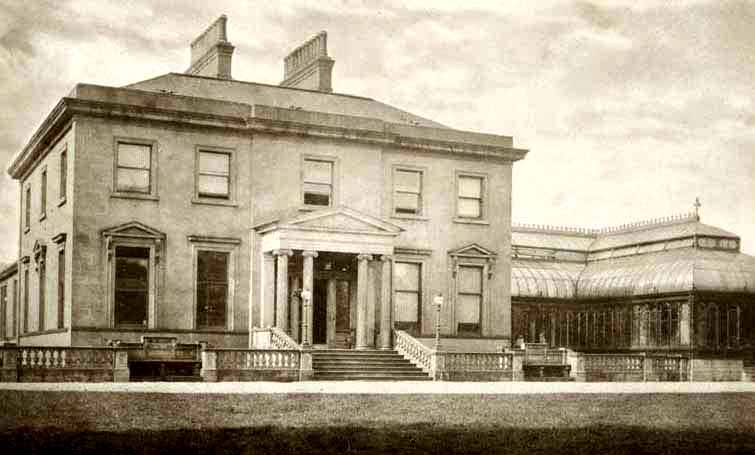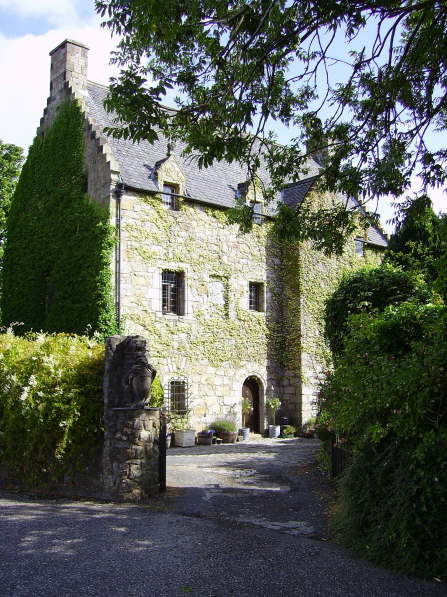
Although one of
the smallest houses, Blackhall Manor has the
oldest and most illustrious history. It is
situated back from the A726 Barrhead Road close
to the junction with Marnock Terrace.
From the Renfrewshire Council website.
The first house on this
site was built in the 12th century by Walter
Fitzalan, High
Steward of Scotland and 1st Baron Renfrew, who
also established Paisley Abbey. The house was originally used
as a hunting lodge as it was then in the midst of
the Forest of Paisley. The Steward's chief
huntsman had his residence nearby on
"Hunter's Hill". The name is still in
use today for the second hill behind Chapelhill
Road (the other one is Blackhall Hill). The
housing estate is also called
"Hunterhill".
Fitzalan's son Alan
FitzWalter
accompanied Richard the Lionheart on the Third
Crusade, from which he returned to Scotland in
July 1191. Blackhall has even closer royal
connections. It was inherited by Walter
Fitzalan's direct descendent Walter Stewart, 6th High Steward
of Scotland and
the 6th Baron Renfrew (1293–1326). He
married Marjorie Bruce, daughter of Robert the Bruce.
Their son became the first of the Stewart kings, King Robert
II. He was
born on 2 March 1316 in
Paisley . The legend is that she died
near Gallowhill, after being thrown from her
horse while heavily pregnant, but the child
survived. Their is a cairn on Renfrew Road to
commemorate the event. He succeeded David II
and founded the Stewart dynasty.
Blackhall continued to
be passed down through the generations of the
Stewart (later known as the Shaw-Stewart) family.
The Stewart family lived at Blackhall until
around 1700 when they moved to Ardgowan
House near
Inverkip, (presumably Ardgowan Street
close to the manor in Paisley is named after it).
It is still owned by the Shaw-Stewart family
today.
Here is a little history .
The family of
Stewart, now Shaw Stewart of Blackhall and
Greenock, Renfrewshire, is descended from Sir
John Stewart, one of the natural sons of Robert
III. From his father Sir John received three
charters of the lands of Ardgowan, Blackhall, and
Auchingoun, all in Renfrewshire, dated 1390,
1396, and 1404. Sir Archibald Stewart of
Blackhall, the fifth from Sir John, was one of
the commissioners to parliament for the shire of
Renfrew, in the reign of Charles I., by whom he
was made one of his privy council, and knighted.
He was also of the privy council of Charles II.,
when in Scotland in 1650. He died in 1658. His
grandson, Sir Archibald Stewart of Blackhall, was
created a baronet of Nova Scotia, 27th March
1667. He had three sons and a daughter. His
youngest son, Walter Stewart of Stewarthill,
which estate he purchased in 1719, was
solicitor-general for Scotland.
The house then became a
farmhouse, and was inhabited until around 1840.
When the tenant farmer moved to a new farmhouse
the roof was removed, probably to avoid tax, and
the house was used as a cattle shed and
store. It continued to be used as a store
for one hundred years, until the Shaw-Stewart
family donated it to the Burgh of Paisley in
1940. By then the house was in a very poor
condition. Vandalism and neglect led it to
deteriorate further until in 1978 the local
authority considered demolition. This proposal
caused a public outcry, and the house was saved.
This is what it looked
like

Finally by 1982, when the house went into private
ownership, the new owner successfully renovated
the house and created a home comprising a great
hall, dining room, four bedrooms and a stone
spiral staircase. The entrance now is guarded by
stone lions salvaged from Ferguslie House in
Paisley, and the dormer windows are surmounted by
a stone thistle, also from Ferguslie House, and a
stone rose from the Ferguslie Mill buildings The
lions can be seen at the gatess and the roses
above the top windows.
Modern interior
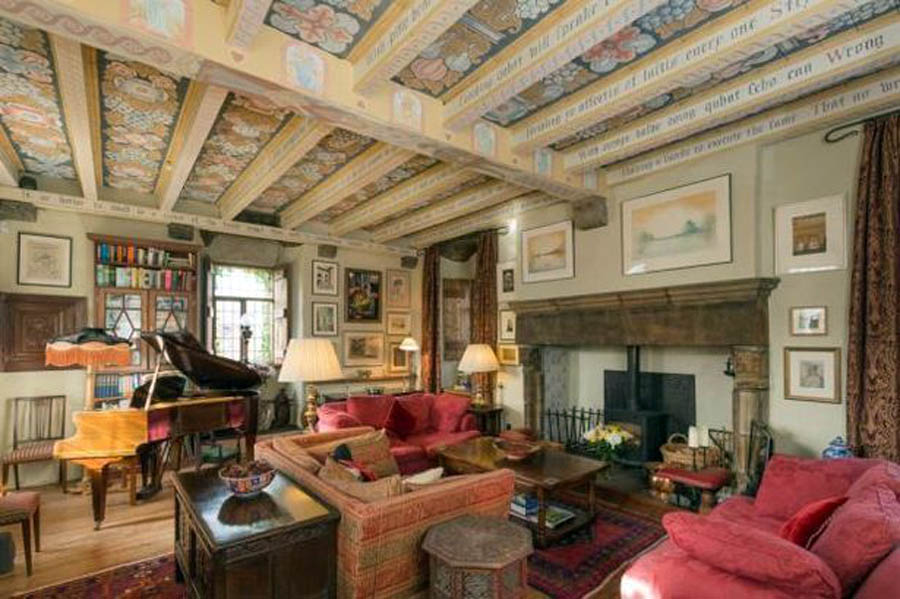 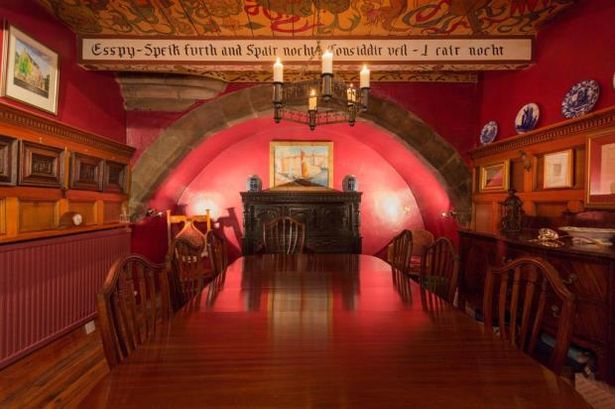
Below is an 1835 map of
the area showing the chapel, Lady Burn and the
Lady Kirk (which Ladykirk Crescent, close to
Ardgowan Street is now named after). Calside is
named Cauldside Street and Causeyside Street is
called Causewayside.

More here.
Across Barrhead Road, at
the bottom of Ardgowan Street from Blackhall lies
Chapel House.
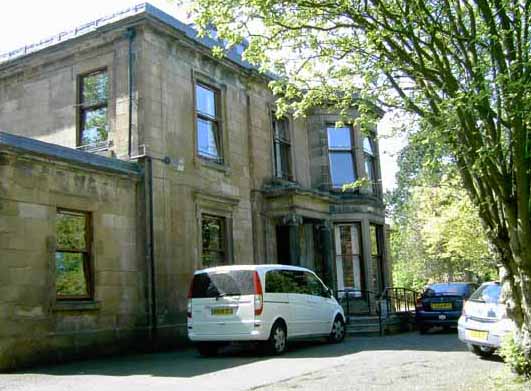
Chapel House isn't very big
but is interesting because of its connection to
Blackhall and the Clark family who owned the
Anchor Mills. It appears in the 1864 map below
along with the site of a Chapel on the other side
of Ardgowan Street almost certainly attached to
Blackhall Manor. The shaded area on the right was
a reservoir.
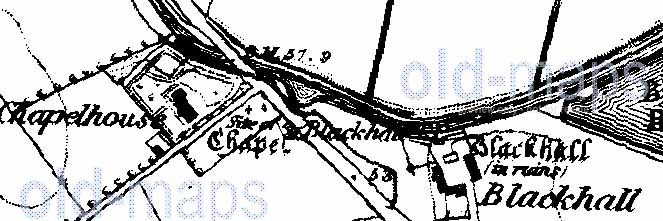
In the boundary wall at the
entrance, there is a stone engraved 1666 which is
from a previous building on the High Street owned
by one of the Clark brothers.
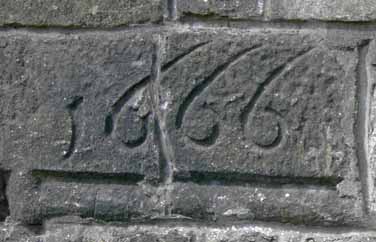
This incredible
picture is Provost James Clark, on 27th May 1882,
the last day of the canal before work began to
convert it into a railway. He is looking up
toward his home, Chapel House. The path on the
right is recognisable today, leading from
Barrhead Road opposite the former Silver Thread
Hotel up to the railway bridge at Patrick Street
which replaced the one shown.
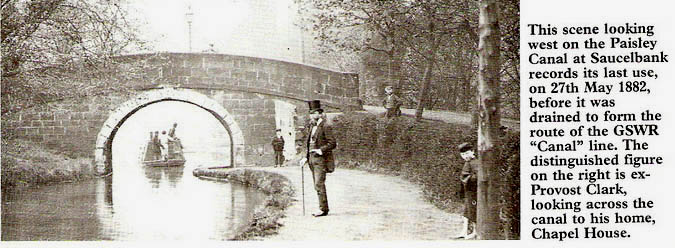
Two generations of the Clark
family are known to have lived in the house.
James Clark was born on 27 February 1831.3 He was
the son of James Clark and Agnes McFarlane. He
married, firstly, Jane Smith, on 3 March 1858,
secondly, Katherine King, d, on 1 June 1871.1 He
died on 6 March 1910 at age 79. He held the
office of Provost of Paisley between 1882 and
1885.
This is from a gravestone in
Abbey Close.
Erected by James & Robert
Clark, in memory of their father James Clark,
Chapel House, who died 19th October 1865 aged 82
years, their mother Agnes McFarlane, who died
11th September 1836 aged 26 years and their
sister Jane who died 10th April 1836 aged 19
months. Sacred to the memory of James Clark,
thread manufacturer, Paisley, who died 6th
October 1829 in the eighty-third year of his age
and his spouse Margaret Campbell who died 6th
November 1825 in the seventy-fifth year of her
age.
From ThePeerage.com
James Clark was born on 27
February 1831 He was the son of James Clark and
Agnes McFarlane. He married, firstly, Jane Smith,
daughter of George Smith, on 3 March 1858. He
married, secondly, Katherine King, daughter of
Maj.-Gen. George King and Catherine Sheridan, on
1 June 1871. He died on 6 March 1910 at age 79.
James Clark held the office of Provost of Paisley
between 1882 and 1885. He lived at Chapel House,
Paisley, Renfrewshire, Scotland.
The house was renovated in 1912
by architect: Balfour Abercrombie who died in
action during the first world war in 1916. It is
now a children's home.
Millar A H (1889) The
castles and mansions of Renfrewshire and
Buteshire
The. old house of Blackhall is situated in the
Abbey parish, a little to the south-east of
Paisley, and near the left bank of the River
Cart. It was at one time the principal seat of
the family now represented by Sir Michael R.
Shaw-Stewart, Bart., and from it they took their
territorial title. The present building has long
ceased to be the family mansion, and for a
considerable time it was left untenanted, and
suffered to fall into partial ruin. The existing
house was probably built towards the close of the
sixteenth century; and though there is no record
of the fact extant, it seems likely that it was
erected in 1574, about the time when James
Stewart of Ardgowan obtained a Charter from James
VI. uniting his lands of Ardgowan, Blackhall, and
Auchingown into a Barony.*
In this Charter reference is made to "the
place of Blackhall," shewing that a mansion
of some kind was then in existence there. It
continued to be the principal residence of the
Stewarts until 1710, at which time Sir Archibald
Stewart transferred his family to Ardgowan, and
made the old mansion a farm-house. When Crawford
wrote his " History of Renfrewshire "
he described Blackhall as " well adorned
with beautiful planting;" but few traces now
remain of the trees and gardens which existed in
his time.
It has been stated that Blackhall was a royal
residence in 1294, though there is no appearance
now of any building at all agreeing with this
description. The lands of Blackhall were
conferred by Robert III. upon his son, Sir John
Stewart, in i396; and from him the present
Baronet is directly descended. A sketch of the
family history will be found in the article
describing Ardgowan.
* Vide Reg. Nag. Sig. 2 q85, Jac. VI.
|
